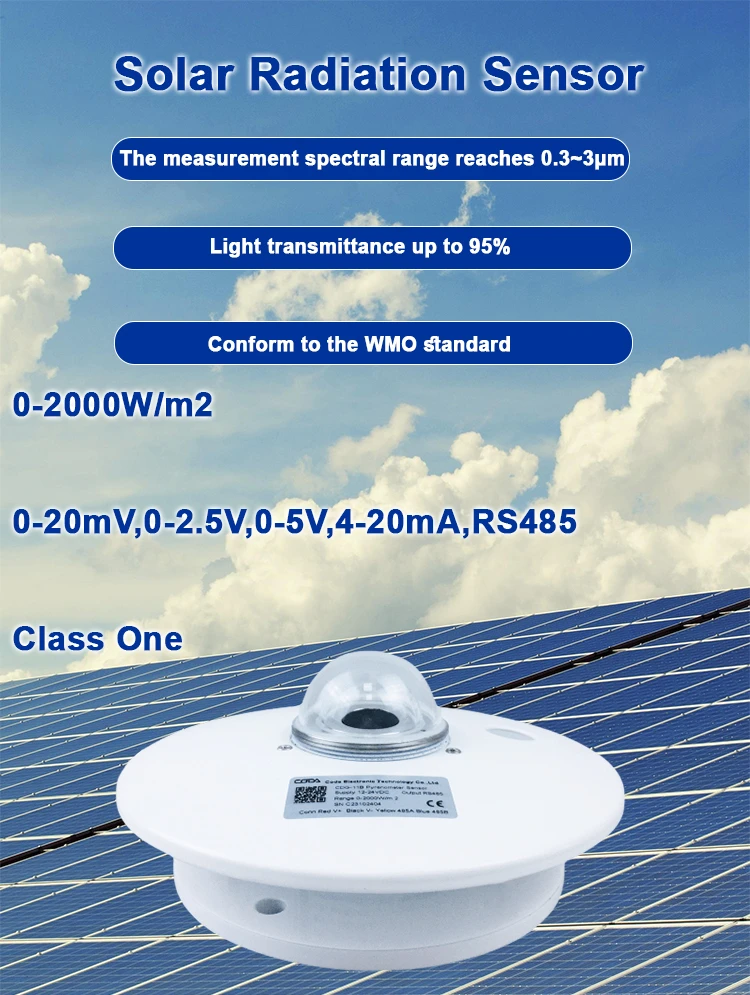Type of Pyranometer Solar Radiation Sensors
A pyranometer sensor gets its name from the Greek word for “sunlight meter.” It shows how strong the sun’s rays are. This article explains how it works and what it can be used for.
I. Operating Principle of a Pyranometer
The pyranometer has a round glass case. Inside, it has a thermopile detector or photoelectric sensor. This sensor changes solar energy into electrical signals. When sunlight hits the pyranometer’s receptor, it absorbs the radiation and turns it into heat.
The rise in thermal energy raises the temperature of the receptor and changes its resistance. You can measure this change in resistance to find out how strong the global solar radiation is.
II. Functions of a Pyranometer
Monitoring Solar Radiation Intensity: pyranometer measurements how strong solar radiation measurements is. This helps scientists learn about climate and environmental changes.
The response time sensor complies with the ISO 9060 international standard and features extremely fast response speed.It also has excellent spectral response.
It also helps them learn about changes in solar energy and how pollution affects solar radiation. Continuous monitoring with thermopile pyranometers provides important data for weather, climate, and solar energy use.
Evaluating Solar Energy System Performance:
Pyranometers track solar radiation. They are important for assessing solar energy systems like solar panels and water heaters. The efficiency of these devices relies on the amount of solar radiation.
By tracking these levels, users can see how well their device works. They can also use solar resources more effectively.
Agricultural Applications:
Farmers use pyranometers in agriculture to check crop growth. This helps them see how different crops use light. Farmers can boost their production and yield by getting clear insights into crop cloudy conditions.
Pyranometers help us see how well solar-powered irrigation systems work. This supports sustainable farming.
Research in Earth Sciences:
In earth sciences, pyranometers are used to study the energy of the earth’s surface. They also help track changes in the environment. Researchers examine the intensity of solar radiation.
They want to learn about changes in surface temperature, melting ice, and rising sea levels. Pyranometers are tools that help us study how air pollution affects sunlight. They give important information to help protect the environment.
Conclusion:
In summary, pyranometer calibration sensor model are helpful tools for measuring solar sunlight. They are important in many fields. These fields include weather observation, solar energy, farming, and earth science.
We can use this information to better understand solar energy and its impact on the environment. This will help us promote sustainable development.
